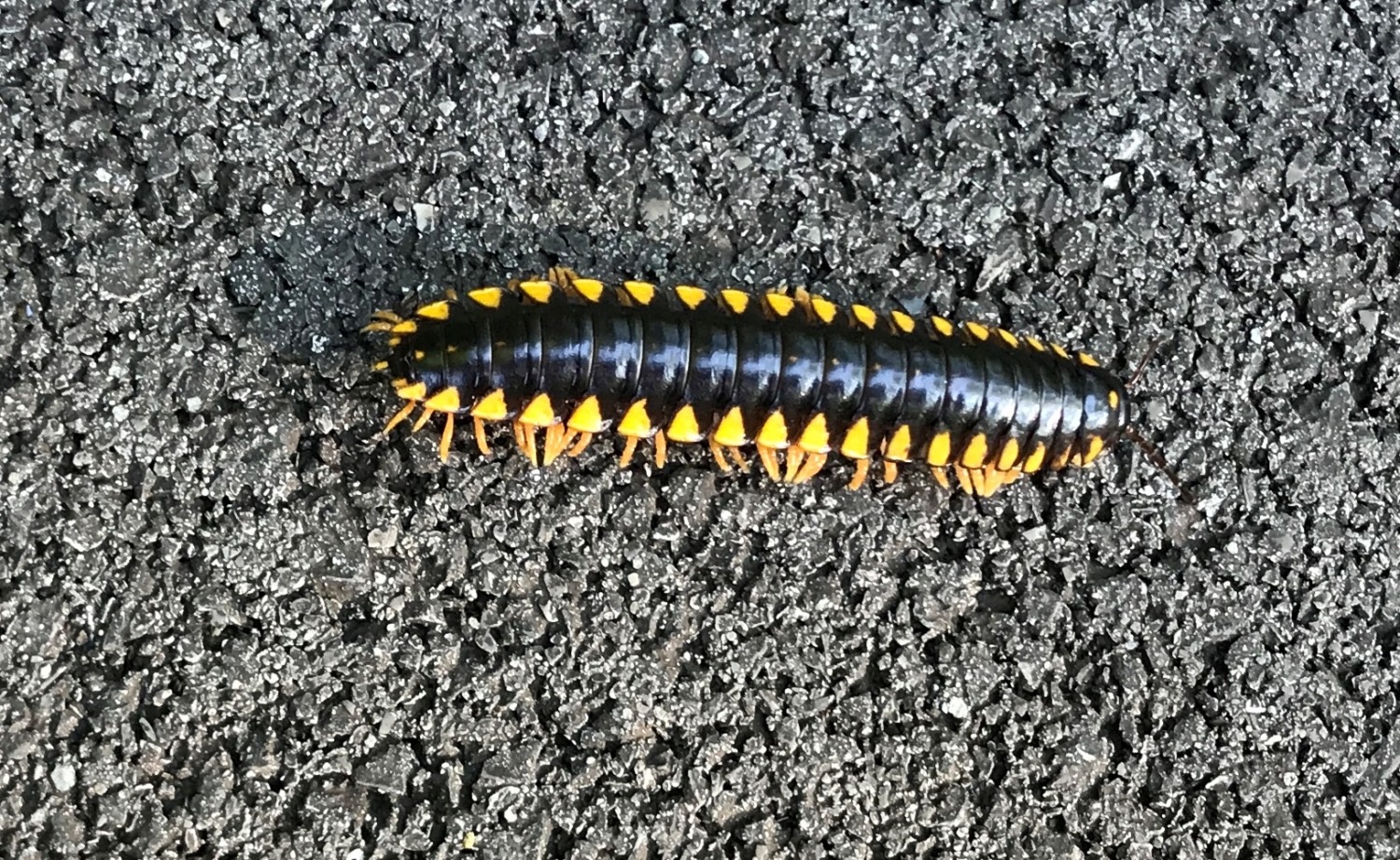Every morning when I take my walk, I come across one or two yellow and black flat-backed millipedes. I don’t remember ever encountering these arthropods before but I have enjoyed watching them wander across the road. Just in case you aren’t up on your nomenclature, arthropods possess an exoskeleton, a segmented body, and paired jointed appendages. In order to keep growing, they must go through stages of molting. There are over 10 million species of arthropods.

The yellow and black flat-backed millipedes are one species of these arthropods. They are common in southern forests in Appalachia. The millipedes are generally black with yellow “dots” on their backs or sides. I’ve seen a few whose dots are more orange than yellow, but I have to assume that is a variation of the same species.
You can tell male from female yellow and black flat-backed millipedes from each other because the females have an additional pair of legs. They have 31 legs while the males only have 30. I have not picked any up to count the number of legs because these millipedes secrete hydrogen cyanide when they are picked up. It wouldn’t hurt me, as long as I washed my hands, but the little things aren’t bothering me, so why should I bother them?
All the millipedes eat decomposing leaves and there are plenty of those here at Cumberland Gap National Historical Park. The females lay 100 eggs at a time, usually under a log. The babies are lighter in color and molt in order to gain body segments and get darker. Here in Cumberland Gap we have two kinds, the Apheloria Tigana and the Apheloria Virginiensis. The Virginiensis have spots on their backs and the Tigana do not.
It is always interesting to spot new species in the different places we live. These little millipedes enjoy their morning walks, just like I do. But, despite all their extra legs, they can’t walk as fast as I can.



